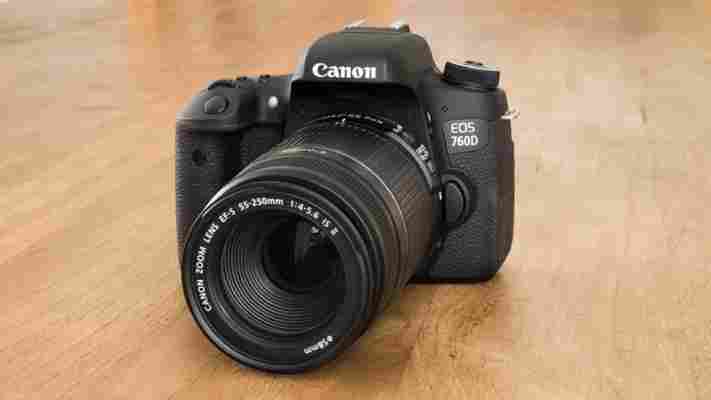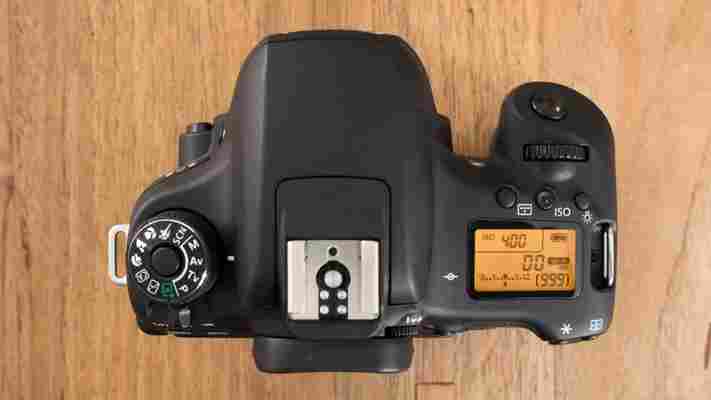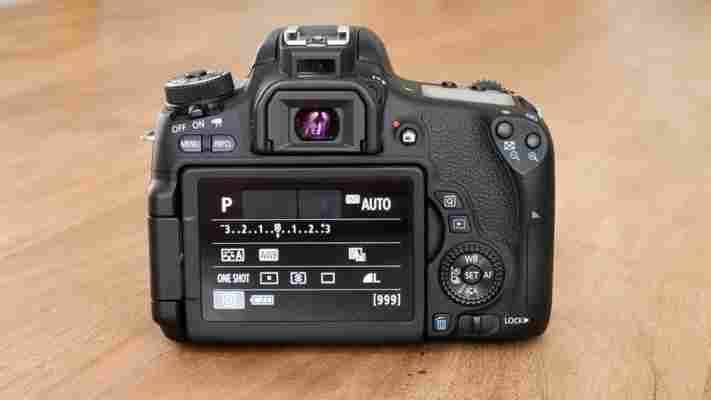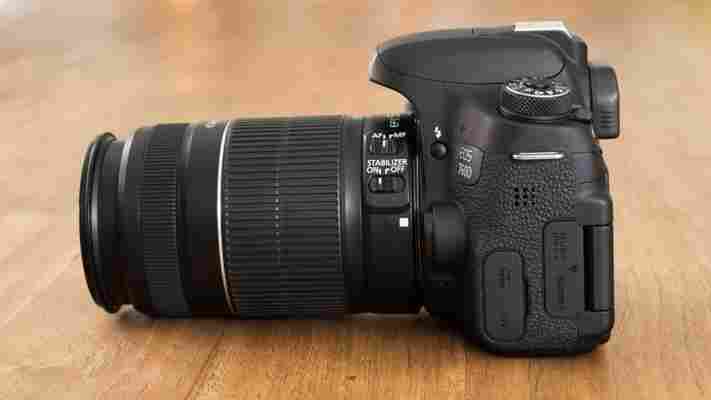Canon has an SLR for every budget, and with the launch of the 760D there are now 13 models to choose from. It's positioned above the Canon 750D and below the Canon 70D and in many respects is a hybrid of the two models.

Inside, the 750D and 760D are identical. They use the same sensor, autofocus system, processor and menus. They both include a 3in articulated touchscreen and relatively small 0.51x (equivalent) optical viewfinder. They include Wi-Fi, with companion apps for iOS and Android handling image transfers and remote photo capture. Their performance is identical, capturing frames at 4.7fps in my tests but slowing to the speed of the card (around 1.2fps) after seven frames in RAW mode. They were nice and responsive in normal use, capturing a photo in less than a second from switching on and at 0.4-second intervals. Shot-to-shot times in live view mode averaged one second – quite a bit faster than the 70D's 2.1 seconds.
Where the 750D and 760D differ is in their physical controls. The 760D has a passive LCD screen on its top plate. This is usually the mark of an upmarket camera but it's not something I tend to use very often. This one shows shutter speed, aperture and ISO speed exposure settings, along with battery, shots remaining and Wi-Fi. Unlike the bigger screens on pricier Canon SLRs, there's no information about autofocus, drive mode, white balance or metering. Then again, the 760D also lacks top-mounted buttons to access these settings. Instead these buttons are located on the back, with settings relayed on the main 3in LCD screen.

The mode dial has been moved over to the left side to make room, and includes a lock button to avoid accidental movement. The rear navigation pad is encircled by a wheel. It's smaller than the substantial wheels on the 70D but it's easy enough to adjust. The 750D's exposure compensation button has disappeared. Instead, the rear wheel is assigned to exposure compensation in program and priority modes. However, it only becomes active after half-pressing the shutter button to prepare the camera for shooting. This caught me out a couple of times, but once I cottoned on I came to appreciate it as it avoids accidental adjustment when handling the camera. In manual exposure mode the rear wheel and command dial provide direct access to aperture and shutter speed.

The 760D also gains an eye-level sensor to switch the rear screen off when the camera is raised to the eye. I'm always happy to see this on a compact system camera, where the camera simultaneously turns on the electronic viewfinder. However, the 750D's screen wasn't that distracting when it stayed on while using the viewfinder. The downside on the 760D is that it's not possible to adjust the autofocus point using the touchscreen while using the viewfinder – possibly an accidental feature of the 750D but one that works surprisingly well.

The 760D also offers all its main photographic controls via its touchscreen. Tapping the Q button turns the read-out of settings into a control panel, adding options such as Picture Style preset, flash and JPEG/RAW settings. One significant drawback is that calibrating the manual white balance involves taking a photo and then navigating to a menu option – this should really be integrated into the white balance settings available via the WB button and Q menu. Overall, though, this is an elegant, efficient control system, although it's closer to the 750D than the 70D.






Leave a Reply